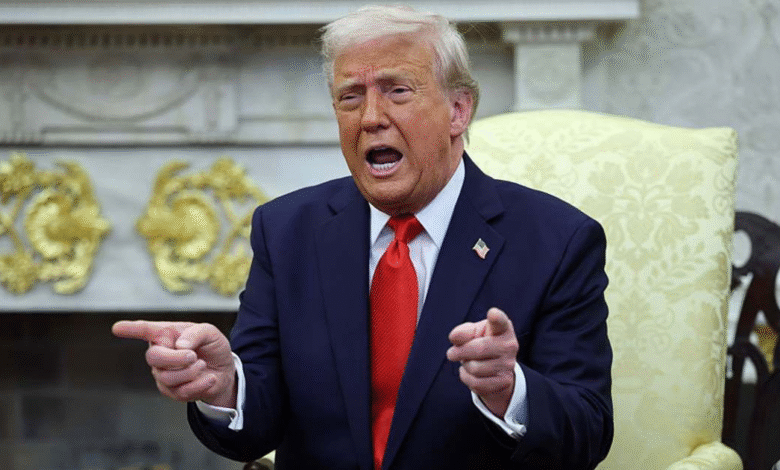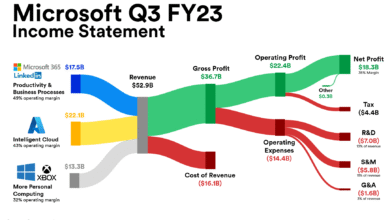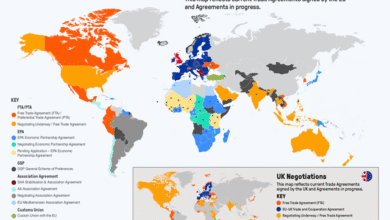White House Letter to Harvard: An Unauthorized Mistake

The recent White House letter to Harvard has ignited intense discussion, as it includes demands for the elimination of the university’s diversity, equity, and inclusion (DEI) programs and proposes ideological screening for international students. According to reports from the New York Times, this controversial communication was deemed “unauthorized” and has sparked debate over significant implications for federal funding, amidst mounting Harvard funding issues. The White House’s aggressive stance has raised alarms about the potential impact on approximately $9 billion in federal support for the prestigious institution. Furthermore, Harvard’s refusal to comply with these sweeping demands could lead to a freezing of nearly $2.2 billion in grants, highlighting the stakes involved in this Harvard University controversy. As both sides navigate this complex landscape, the political and educational ramifications continue to unfold, capturing national attention and scrutiny.
The communication from the U.S. government to Harvard University, which has drawn considerable controversy, has raised questions surrounding federal oversight in higher education. The directive reportedly demands significant changes, including the cessation of certain diversity initiatives and the enforcement of ideological checks on international admits. Referred to as a contentious letter, this development highlights the ongoing tensions between educational institutions and federal funding authorities. As Harvard grapples with these serious allegations, the broader implications for diversity policies and funding frameworks in academia come into sharp focus. This situation serves as a crucial case study in the intersection of higher education, governance, and social equity initiatives.
Understanding the Controversy: The White House Letter to Harvard
The recent controversy surrounding the White House letter to Harvard University has generated significant public discourse, particularly regarding the implications of its demands. On April 11, the letter insisted that Harvard eliminate its diversity, equity, and inclusion (DEI) programs, a move that many perceive as an overreach of federal influence in educational institutions. This unexpected directive sparked outrage among advocates for diversity and inclusivity, who argue that such measures are essential for fostering a holistic academic environment. As debates unfold, the potential impact on federal funding for Harvard, which amounts to billions, adds a layer of complexity to the discourse.
Furthermore, the authenticity of the letter has sparked discussions about governance and accountability within federal agencies. The White House admitted the letter was sent without proper authorization, questioning the decision-making processes in high-stakes governmental communications. Harvard’s legal team is now facing mounting pressure to respond both to the demands and the surrounding public scrutiny. The ramifications of this situation extend beyond Harvard, offering a glimpse into the broader implications for institutions reliant on federal funding in the face of politically motivated directives.
Key Demands and Their Implications for DEI Programs
The demands outlined in the White House letter present a direct challenge to DEI programs at Harvard University. The expectation that these programs be eliminated raises questions about the future of inclusivity within higher education. DEI initiatives are designed to bridge gaps in representation and create equitable learning environments. By targeting such programs, the administration signals a shift in policy that could reshape academic priorities across the nation, potentially affecting many institutions that model their initiatives after Harvard’s progressive policies.
Moreover, the threat of federal funding cuts looms heavily over Harvard’s response. If the university proceeds to reject the White House’s demands, it risks losing access to approximately $9 billion in federal funding that supports various educational initiatives. This tug-of-war not only jeopardizes specific programs reliant on these funds but also raises a broader concern about academic freedom and the extent of governmental influence in shaping educational institutions. Stakeholders worry that the push against DEI programs could lead to a chilling effect on similar initiatives across other colleges and universities.
The Fallout: Federal Funding and Administrative Repercussions
The consequences of the White House’s letter extend far beyond immediate compliance. With the threat of freezing nearly $2.2 billion in grants, the government is emphasizing its control over the funding processes that significantly affect Harvard’s operational budget. Such a substantial financial stake means that any confrontation between the university and federal authorities risks destabilizing crucial programs that facilitate research, diversity efforts, and student support services. The potential fallout could reverberate throughout the higher education landscape, as institutions reconsider their alignment with federal mandates.
As Harvard navigates this precarious situation, there is growing concern among university leaders regarding the long-term implications for academic independence. The challenges posed by federal funding issues create a climate where institutions may self-censor or modify their programs to align with governmental directives, undermining the spirit of intellectual diversity and free inquiry. The tension between maintaining funding and upholding academic integrity has never been more pronounced, placing Harvard at a crossroads between its values and financial viability.
Legal Perspectives on Harvard’s Response to Government Demands
The legal ramifications of the White House letter to Harvard have propelled the university’s legal team into a critical position. With the letter being deemed ‘unauthorized,’ the validity of the demands presents a unique challenge for Harvard’s lawyers. Legal experts suggest that navigating this situation will require a careful balancing act; they must ensure that Harvard upholds its commitment to DEI while also protecting its financial interests against federal funding threats. The response from Harvard’s legal team may set a precedent for how other universities can address similar issues in their interactions with government bodies.
Additionally, this incident may provoke further legal scrutiny regarding the First Amendment and institutional autonomy in higher education. Depending on how the situation develops, it could lead to a broader examination of governmental powers in dictating educational policy. Scholars and civil rights advocates alike are watching closely, as the outcomes of Harvard’s legal stand could either embolden or deter future challenges against governmental pressure on educational policies, especially relating to diversity and inclusion.
The Role of Public Opinion in the Harvard Controversy
Public opinion plays a significant role in the fallout from the White House letter to Harvard. The swift backlash against the suggested elimination of DEI programs reflects a widespread recognition of their importance in fostering a diverse and inclusive educational environment. Many members of the public and academic community have voiced their concerns, emphasizing that the government’s interference could have detrimental effects on both student experience and societal progress. Online platforms and media outlets are abuzz with commentary, analysis, and advocacy, showcasing how collective voices are shaping the narrative surrounding this controversy.
Moreover, as the situation unfolds, the responses from both the White House and Harvard will likely be scrutinized by a highly engaged public. The issue is not just about a single letter or a university’s internal policies; it represents a larger dialogue about the values that underpin higher education in America. As more stakeholders engage in the conversation, it becomes clear that public sentiment could influence policymakers, compelling them to reconsider their strategies regarding educational funding and institutional autonomy.
Future Implications for DEI in Higher Education
The future of DEI initiatives in higher education is intricately tied to the responses elicited by the White House’s letter to Harvard. As institutions of higher learning assess the balance between adhering to federal demands and fostering diversity, they face a robust test of their values. Should Harvard yield to pressure and eliminate its DEI programs, it could inspire similar actions across the nation, leading to the rollback of progressive policies in various educational settings. Conversely, a staunch defense of these initiatives could set a powerful precedent for other universities that prioritize inclusivity.
Furthermore, this controversy highlights a pivotal moment in the broader national discourse on diversity and inclusion. As debates surrounding governance, funding, and educational philosophy intensify, it remains crucial for educational leaders to advocate for policies that truly represent the multi-faceted nature of society. The repercussions of this situation may extend into legislative actions, prompting discussions that reaffirm the commitment to diversity, equity, and inclusion in academic environments, which are essential for cultivating future leaders.
Bipartisan Responses to the Harvard Funding Controversy
Bipartisan reactions to the White House’s letter to Harvard have emerged, reflecting a complex landscape of perspectives on the importance of federal funding in higher education. While some lawmakers have expressed support for the administration’s demands, arguing that DEI programs should be scrutinized for their effectiveness, others caution against undermining institutional values in pursuit of political goals. This division underscores the differing interpretations of what constitutes progress and equity in educational settings.
Moreover, the ongoing debate might ignite discussions within Congress regarding the future of federal funding for institutions with controversial programs. As lawmakers navigate their positions, the discourse around Harvard may influence broader funding policies and the expectations placed on universities regarding the implementation of diversity initiatives. Bringing together various viewpoints in a constructive dialogue could potentially lead to more nuanced solutions that encourage both accountability and inclusivity in higher education.
Navigating the Impact of Antisemitism on University Policies
The letter’s timing coincides with broader discussions about antisemitism within academic institutions, which adds another layer of complexity to Harvard’s response. The accusations surrounding antisemitism in relation to DEI programs and international student screening are particularly potent, as they challenge universities to confront difficult issues of bias and discrimination. Harvard has a unique obligation to address these concerns transparently while defending its commitment to diverse programs that cater to various communities.
This dual focus on DEI and antisemitism may require Harvard to reevaluate its policies and practices, ensuring that all students feel safe and included. The response tactics that Harvard chooses could become a guide for other institutions grappling with similar questions. As conversations about antisemitism evolve, they may highlight institutional responsibilities that intersect with broader societal issues, potentially shaping public perceptions about what it means to foster an inclusive campus environment.
The Role of Universitites in Shaping Federal Policies
The controversy surrounding the White House letter to Harvard brings to light the evolving role of universities in shaping federal educational policies. As institutions that serve a diverse student body, universities hold substantial influence on public opinions and policy. Harvard’s response and its willingness to maintain its DEI programs may set an example for other universities, signaling a collective stand against government overreach that could fundamentally change educational frameworks across the country.
As universities push back against mandates perceived as constraint on academic freedom, the ongoing interactions between educational institutions and federal authorities may lead to significant policy reform. If Harvard successfully advocates for the protection of its programs, it could inspire a wave of solidarity among universities nationwide. This could ultimately reshape the governance of federal funding regarding inclusivity and diversity, reinforcing the premise that higher education institutions are not just implementers of policy but also active participants in the dialogue surrounding equity in education.
Frequently Asked Questions
What were the key demands in the White House letter to Harvard regarding DEI programs?
The key demands in the White House letter to Harvard included the elimination of diversity, equity, and inclusion (DEI) programs and the implementation of ideological screening for international students. This letter’s demands have sparked significant controversy regarding federal funding for the university.
How does the White House letter to Harvard impact federal funding for the university?
The White House letter to Harvard poses a serious risk to approximately $9 billion in federal funding, particularly after Harvard rejected the demands. The potential freezing of nearly $2.2 billion in federal grants is a direct response from the administration, heightening the stakes for the university amid ongoing discussions about funding issues.
Why was the White House letter to Harvard labeled ‘unauthorized’?
The White House letter to Harvard was labeled ‘unauthorized’ because it was sent without proper authorization from the higher officials in the administration, despite being authentic. Insights from sources indicate that the individuals who signed the letter did so without the green light, leading to questions about the legitimacy of the demands made.
What has been Harvard’s response to the demands in the White House letter?
Harvard’s response to the White House letter was one of grave seriousness, as the university acknowledged the legitimacy of the demands made within it. While rejecting the requests outlined in the letter, Harvard’s spokesperson indicated uncertainty about the ramifications of the government’s communication, especially regarding the potential loss of federal funding.
What are the implications of the White House demands for Harvard’s DEI programs?
The implications of the White House demands for Harvard’s DEI programs are significant, as they threaten to dismantle essential initiatives aimed at fostering diversity and inclusion. The call to eliminate these programs intersects with ongoing federal funding debates, potentially impacting the university’s financial resources and public policy stances.
How does the controversy surrounding the White House letter to Harvard relate to ongoing discussions about antisemitism?
The controversy surrounding the White House letter to Harvard is interlinked with broader discussions on antisemitism and other critical issues. As the university’s legal team engages with the White House on its handling of such matters, the demands outlined in the letter add another layer of complexity to Harvard’s response to federal expectations regarding discrimination and inclusivity.
| Key Points |
|---|
| Letter deemed ‘unauthorized’ by White House insiders. |
| Demands include elimination of DEI programs and screening of international students. |
| Harvard confirmed the letter’s authenticity and seriousness. |
| Public feud over the letter threatens $9 billion in federal funding. |
Summary
The White House letter to Harvard has sparked significant debate and controversy within academic and political circles. Following claims from sources that the letter was ‘unauthorized,’ the situation has raised questions about the legitimacy and implications of the demands put forth, particularly regarding DEI programs and international student screening. As both institutions navigate the complexities of this matter, the potential impact on federal funding for Harvard looms large, highlighting the tension between government oversight and institutional autonomy.




